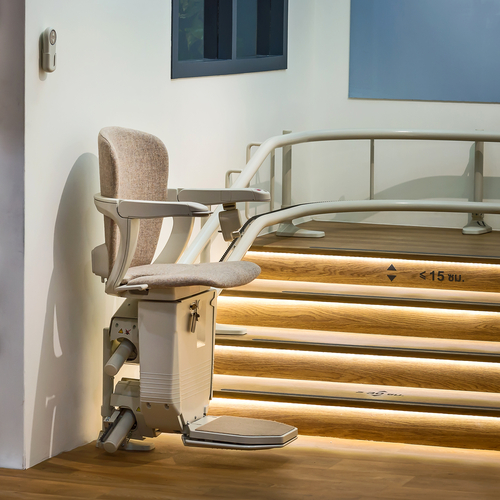This is a sponsored guest post.
Mobility issues arise because of a recent accident, a medical condition, or old age, affecting the daily activities and lifestyle of your family. Staircases are considered a major obstacle for patients who use wheelchairs or people with disabilities. When you, your child, or your elderly parent is faced with a temporary or permanent mobility issue, it’s important to be prepared by knowing your options.

In this post, you’ll learn the benefits and differences of home elevators and stair lifts, so you can compare the two and make the right decision.
Elevators Vs. Stairs: Purpose of Use
It’s crucial to know the reason why you want a residential elevator or a stairlift instead. By doing so, you’ll be able to make the right decision based on your mobility needs. Stairlifts are highly beneficial for family members who have just recently been injured and need to recover at home quickly. On the other hand, elevators generally provide long-term convenience for you and your family.
Aside from knowing what you need, it’s essential to talk with a mobility lift professional to understand your options, so check https://nationwideliftsoftx.com for more details.
Here are the advantages of installing a residential elevator:
A residential elevator can help improve mobility.
You’ll be able to move belongings, groceries, and luggage from floor to floor with ease and speed.
Make your home mobile-friendly for family members or guests and visitors with injuries or are suffering from mobility issues.
It’s a good selling point should you sell your home in the future.
Elevators Vs Stairs: Installation Process
Stair lifts and elevators are not just considered luxurious mobility lifts found at the mall or doctor’s office. Residential mobility options are now available depending on the preferred mobility access, convenience, and degree of mobility issue of a disabled patient or family member. The installation process may take a week, several weeks, or up to a month or more, depending on a lot of factors.
Here are the things you need to know when comparing elevators and stair lifts:
Elevator lifts come in different types with the varying installation process. Hydraulic elevators would need more space because they require a machine room and are ideal for newly constructed homes. The most common type of elevator is a traction elevator. It uses a pulley system or steel ropes. On the other hand, a pneumatic elevator applies air pressure that won’t need a shaft, which is perfect for retrofitting. Elevators are better than stairlifts when it comes to weight capacity, number of loads to be carried, versatility, and ease of use.
A stairlift or chairlift, on the other hand, includes a seat, a track, and a motor. It is easier to install than an elevator without needing remodeling or renovations. It usually takes four hours or even less. Also, no separate equipment is necessary. Because chairlifts are battery-powered, you don’t need to worry when an outage strikes while you are riding it. Another advantage of installing stairlifts is you can have one installed outdoors and one indoors, which provides a safe solution for you or your loved one whenever you go up and down a porch or a basement. As compared to elevators, stairlifts are quieter when it comes to operations.
Elevators Vs. Stairs: Price Comparison
Because you need to work with professionals, such as an architect, a certified elevator contractor, and a building contractor, expect to pay more when having a residential elevator installed. However, an elevator is your best option if you want a mobility lift that you can use indefinitely. It is also a good selling point if you decide to sell your home in the future, increasing its real estate value and sale appeal. On the other hand, stairs are suitable for providing temporary or minimal mobility assistance.
Here are the differences in terms of cost between elevators and stairs:
Elevators: When it comes to the cost, home elevators range from $15,000 to $25,000, considering the additional costs to build the machine room, shaft, and other renovation work. Fancy elevators usually cost up to $100,000, which includes surround music and a finished interior, such as tile or wainscoting, making them the number one pride of luxurious homeownership.
Stairlifts: The price of straight stairlifts range from $2,500 to $5,000. For multi-story or curved stairlifts, the cost ranges from $8,000 to $15,000. A chairlift is a cost-effective way to get up or down the stairs. A typical expense when installing a stairlift is adding an electrical or power outlet at the bottom of the stairs. A curved chairlift is custom-made, so it is more expensive than a straight lift.
Conclusion
Installing a stairlift or elevator lift is a worthy investment because it would not only promote safe transportation inside and outside the home, but it also makes a great selling feature for your home. Regardless of the choice you make, always make sure to deal with a certified or licensed mobility lift expert to ensure the quality of work. Move from one floor to another conveniently and safely by using either a stairlift for limited use, or a residential elevator for a wide array of mobility purposes.




